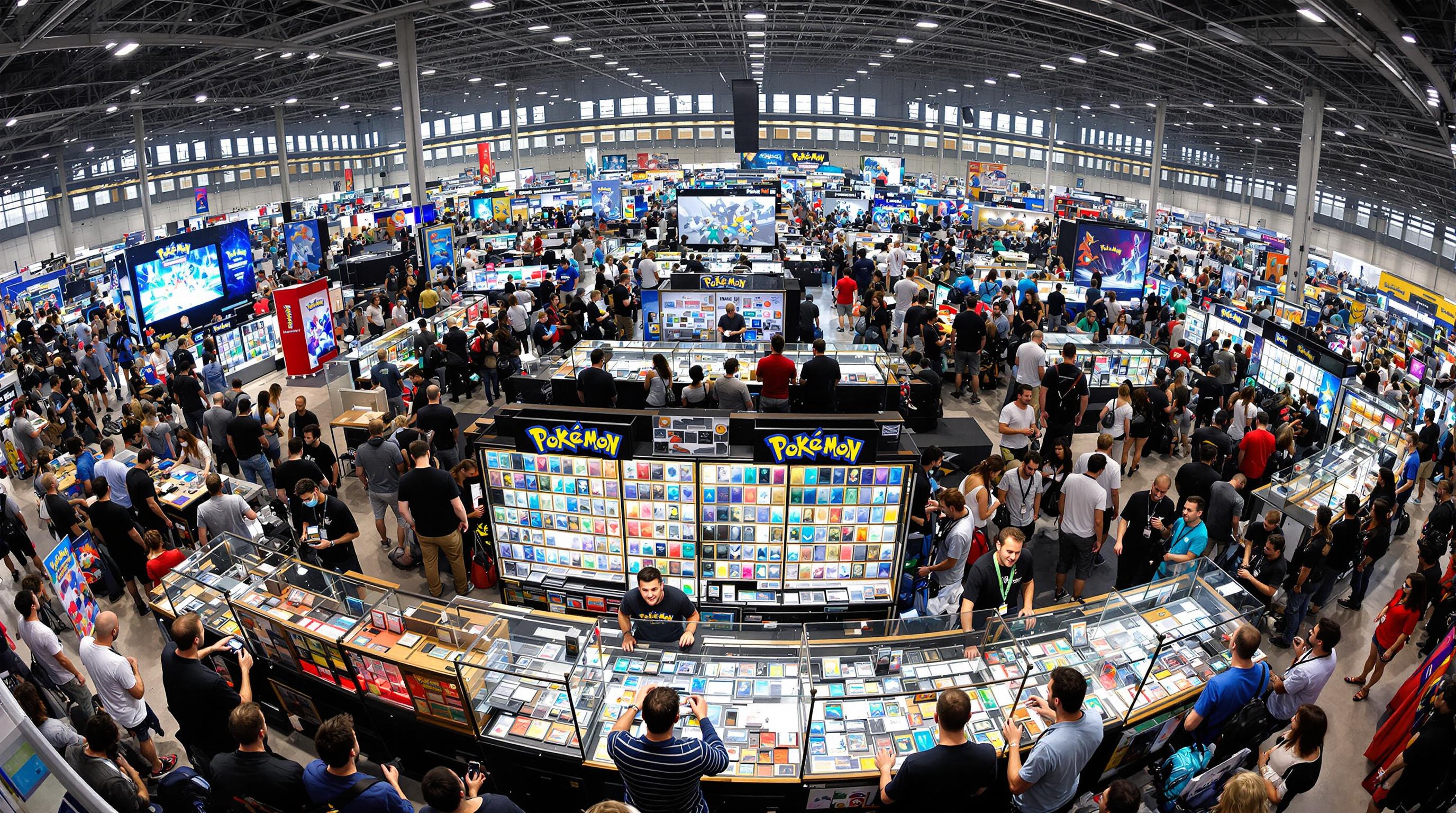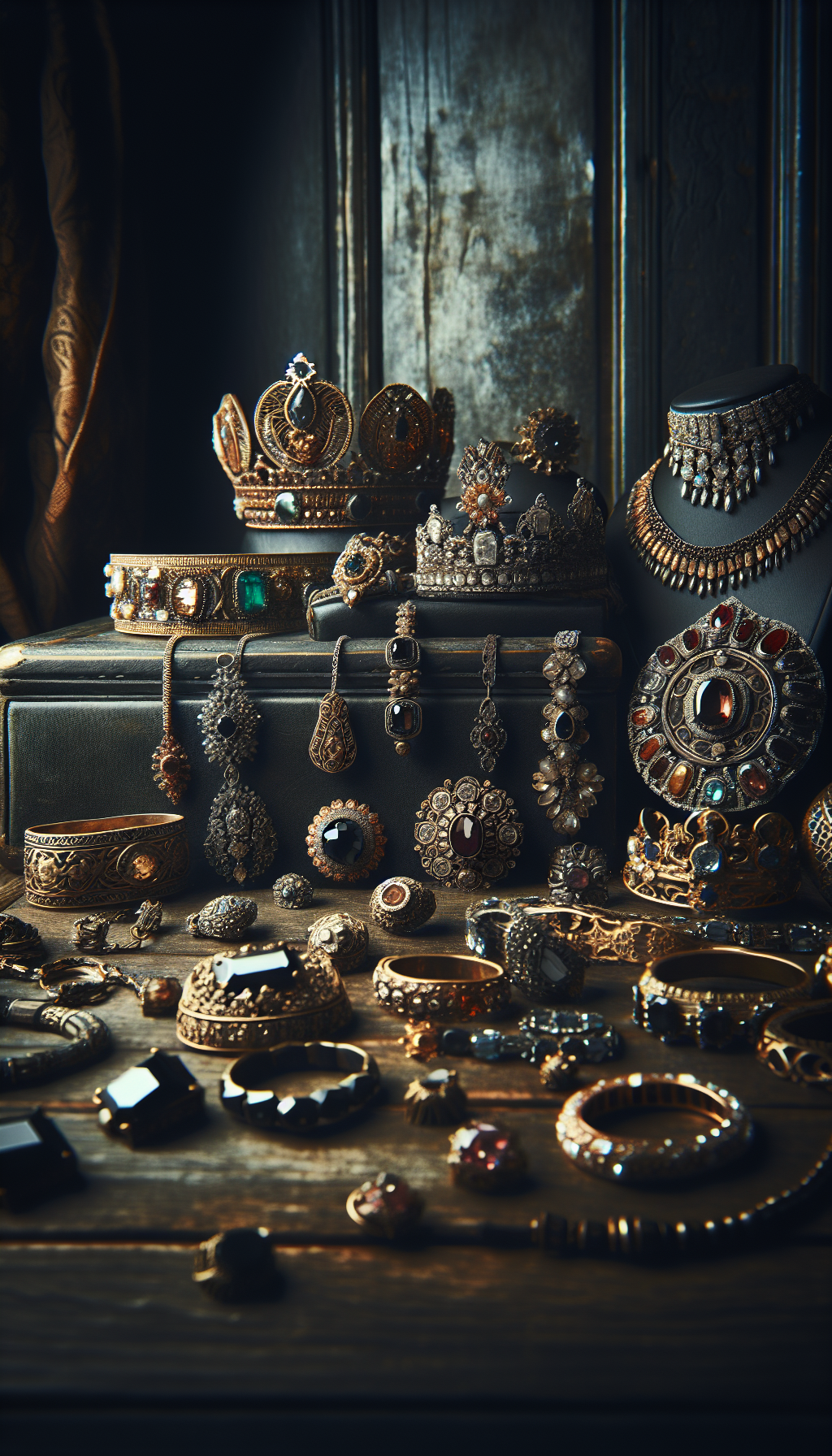Pocket Monster cards, better known in the West as Pokémon cards, have become one of the most significant collectibles in recent memory. Whether you’ve discovered a binder full of childhood memories or are actively building your collection, understanding the value of these colorful cardboard treasures is essential. In this comprehensive guide, we’ll explore what determines Pocket Monster card values and how to identify if your collection contains hidden gems worth substantial sums.
Table of Contents
- Understanding Pocket Monster Card Values
- Factors That Determine Card Value
- Most Valuable Pocket Monster Cards
- Japanese vs. English Card Values
- Identifying Authentic Cards
- Where to Sell Your Valuable Cards
- Resources for Card Valuation
- Common Questions About Pocket Monster Card Values
Understanding Pocket Monster Card Values
Pocket Monster Card Market Statistics
According to data from MAVIN, the average value of Pocket Monster cards is approximately $27.04, with sold comparables ranging from as low as $1.00 to as high as $540.50. However, these figures can be misleading, as the most valuable cards can sell for significantly more, while common cards may be worth less than a dollar.
For most collectors, the reality is that the majority of their cards fall into the following value categories:
Average Pocket Monster Card Values
General market value ranges based on card type and condition
</tbody>
</table>
Factors That Determine Card Value
1. Rarity and Edition
The rarity of a card is one of the most significant factors in determining its value. Cards are typically categorized as common, uncommon, rare, or ultra-rare. First edition cards, particularly from the earliest sets, are especially valuable.
A card’s edition can be identified by looking for specific symbols:
- First Edition cards have a “1st Edition” stamp on the middle-left side of the card
- Unlimited Edition cards lack this stamp but may still be valuable depending on other factors
- Shadowless cards (early prints without a drop shadow around the image box) command higher prices
2. Condition
The physical condition of your cards dramatically impacts their value. Professional grading services like PSA (Professional Sports Authenticator) or BGS (Beckett Grading Services) use a 10-point scale to grade cards:
Card Condition Assessment Factors
Key elements that determine a card's condition grade
- No visible surface scratches on the card front
- Sharp corners with no white showing
- Perfect centering of the image and borders
- No visible print lines or defects
- Clean card back with no marks or stains
- No creases or bends in the card
A PSA 10 (Gem Mint) card can be worth many times more than the same card in PSA 7 (Near Mint) condition. For example, a first edition holographic Charizard in PSA 10 condition has sold for over $300,000, while the same card in PSA 7 might sell for under $15,000.
3. Age and Set
Cards from the earliest sets, particularly the Japanese releases from 1996 and the first English base sets from 1999, typically hold the highest value. The history of Pocket Monster cards can be traced through these key periods:
Pocket Monster Cards Historical Timeline
- October 1996
First Japanese Cards Released
The original "Pocket Monsters" cards were first released in Japan by Media Factory, containing 102 cards with artwork by Ken Sugimori, Mitsuhiro Arita, and Keiji Kinebuchi. - January 1999
Introduction to North America
Wizards of the Coast introduced the English version of Pokémon cards to the North American market, sparking a worldwide phenomenon. - 2003
Nintendo Takes Over
Nintendo's Pokémon Company International took over production from Wizards of the Coast, introducing the EX series. - 2016-2017
Pokémon GO Resurgence
The release of Pokémon GO mobile game triggered renewed interest in the card game and collectibles. - 2020-2021
Pandemic Collecting Boom
The COVID-19 pandemic and celebrity interest sparked a massive surge in card values and collecting activity.
4. Character Popularity
Cards featuring popular Pokémon like Charizard, Pikachu, and Mewtwo typically command higher prices than those featuring less popular characters. This popularity factor can even override rarity in some cases.
5. Special Features
Cards with unique characteristics often have increased value:
- Holographic (or “holo”) cards with reflective images
- Full-art cards that extend the artwork to the edges
- Secret Rare cards with numbering beyond the set’s official count
- Error cards with printing mistakes or variations
- Promotional cards released for special events or tournaments
Most Valuable Pocket Monster Cards
Here are some of the most valuable Pocket Monster cards ever sold:
Record-Breaking Pocket Monster Card Sales
Highest recorded sales for individual cards
| Category | Price | Notes |
|---|---|---|
| Common Non-Holo Cards | $0.10 - $2.00 | Abundant supply, easily replaceable |
| Uncommon Non-Holo Cards | $0.50 - $5.00 | Slightly harder to find |
| Holographic Cards | $5.00 - $15.00 | For standard holographic cards in good condition |
| Rare Holographic Cards | $15.00 - $100.00 | Popular Pokémon or special artwork |
| Ultra-Rare Cards | $100.00 - $1,000+ | Limited prints, promotional cards, 1st editions |
| Vintage (1996-2000) | $5.00 - $10,000+ | Highly dependent on specific card and condition |
</tbody>
</table>
The Pikachu Illustrator card is exceptionally rare, with only around 40 copies ever printed. It was originally awarded to winners of illustration contests in Japan in 1998, making it one of the most sought-after cards in existence.

However, for most collectors, finding such valuable cards is extremely rare. More commonly, valuable cards in an average collection might include:
- First edition holographic cards from the Base Set (worth $100-$500+ depending on condition)
- Shadowless holographic cards ($50-$300+ depending on condition and character)
- Early Japanese promo cards ($20-$100+)
- Error cards with printing mistakes ($20-$200+ depending on the error)
Japanese vs. English Card Values
Japanese Card Value Considerations
Japanese Pocket Monster cards have several unique characteristics that can affect their value:
Historical Significance: As the original release, Japanese cards came out earlier (starting in 1996) than English versions (1999). This gives them historical importance in the collecting community.
Print Quality: Japanese cards are often recognized for their superior print quality, with sharper images and better coloration.
Market Dynamics: Interestingly, Japanese cards are generally more valuable in Western markets, while English cards may command higher prices in Japan due to their relative scarcity there.
Unique Designs: Some Japanese cards feature artwork or designs never released in English versions.
According to collectors on forums like The Poké Community, Japanese cards from 1996 can range anywhere from $1 for common cards to several hundred dollars for rare cards in mint condition. The rarest Japanese cards, like the Illustrator Pikachu, can be worth thousands or even millions.
Japanese vs. English Card Value Comparison
General comparison of card values between languages
| Item | Price | Date | Auction House |
|---|---|---|---|
| Pikachu Illustrator | $5,275,000 | July 2021 | Private Sale |
| 1st Edition Shadowless Charizard (PSA 10) | $420,000 | March 2021 | PWCC Auctions |
| 1st Edition Shadowless Charizard (PSA 9) | $220,574 | October 2020 | Iconic Auctions |
| Japanese Pocket Monsters Base Set Charizard (PSA 10) | $57,877 | September 2020 | eBay |
| 1st Edition Blastoise (PSA 10) | $45,100 | November 2020 | eBay |
</tbody>
</table>
Identifying Authentic Cards

How to Spot Fake Pocket Monster Cards
Authenticity Verification Checklist
Use these checks to identify potential counterfeit cards
- Check for the accent mark in 'Pokémon'
- Examine card stock thickness and feel
- Look for the blue inner layer when viewing card edge
- Verify proper font and text spacing
- Examine holographic pattern quality
- Check back of card for correct coloration and pattern
- Examine copyright information for accuracy
Key warning signs of fake cards include:
Missing Accent Mark: Authentic cards always include the accent in “Pokémon.” Missing this mark is an immediate red flag.
Card Stock Quality: Authentic cards have a specific feel and thickness. Fakes often use thinner or glossier card stock.
Blue Core Layer: When examining the edge of a genuine card, you should see a thin blue layer sandwiched between the front and back layers.
Print Quality Issues: Counterfeits often have blurry text, off-color printing, or pixelated images.
Light Test: When shining a bright light through the card, authentic cards block most light but allow some through, while many fakes either block all light or let too much through.
For Japanese cards specifically, verify that the card back has the correct “Pocket Monsters Trading Card Game” text in Japanese, and that the copyright information matches the expected year of production.
Where to Sell Your Valuable Cards
Popular Selling Platforms
eBay: The most popular platform for selling Pocket Monster cards, offering a global audience. Best for cards worth over $10 to justify shipping and fees.
TCGPlayer: A specialized marketplace for trading card games with a built-in pricing database that makes it easy to list cards at competitive prices.
Card Shows and Conventions: In-person events where you can meet buyers directly, particularly good for high-value cards where buyers may want to inspect them personally.
Local Card Shops: Offers immediate payment but typically at 40-60% of market value since shops need to profit on resale.
Reddit Communities: Subreddits like r/PokemonCardValue and r/pokemontcgtrades provide places to price check and sell directly to other collectors.
Facebook Groups: Dedicated Pokémon card trading and selling groups allow for direct sales with lower fees than platforms like eBay.
Auction Houses: For extremely valuable cards (worth $1,000+), established auction houses like Heritage Auctions or Goldin Auctions can help reach serious collectors.
When selling valuable cards, especially those worth over $100, consider getting them professionally graded by services like PSA or BGS first. While grading costs money and takes time, a high grade can significantly increase a card’s value and authenticity in the eyes of buyers.
Resources for Card Valuation
Card Valuation Resources
CardMavin
Offers a free price guide tool that shows recent sales data for specific cards, making it easy to see current market values rather than inflated asking prices.
TCGPlayer
One of the largest marketplaces for trading cards with extensive pricing data based on actual sales and listings from multiple sellers.
PriceCharting
Offers pricing data for both ungraded and graded cards, allowing you to compare values across different condition grades.
PSA Card Facts
Provides information about card populations (how many have been graded) and auction prices, particularly useful for rarer and more valuable cards.
Reddit r/PokemonCardValue
A community where collectors can post photos of their cards and get value estimates from knowledgeable members.
eBay Sold Listings
Search for your specific card and filter by "Sold Listings" to see what identical cards have actually sold for recently, rather than just asking prices.
When using these resources, be sure to match your card exactly by:
- Set name and number
- Language (Japanese or English)
- Edition (1st Edition, Unlimited, etc.)
- Condition
- Holographic or non-holographic
For the most accurate valuation, check multiple sources and look at recent sales rather than current listings, as listed prices are often higher than what cards actually sell for.
Common Questions About Pocket Monster Card Values
Pocket Monster Card Value FAQ
Are Pocket Monsters cards valuable?
Yes, Pocket Monsters cards (Pokémon cards) can be quite valuable, with some rare cards selling for thousands or even millions of dollars. However, the majority of common cards are worth less than $2 each.Value depends on factors like:
- Rarity and edition
- Card condition
- Age and set
- Character popularity
- Special features (holographic, errors, etc.)
If you have a binder full of cards, it might be worth anywhere from under $100 to thousands of dollars depending on these factors.
How much are 1996 Japanese Pocket Monster cards worth?
The original 1996 Japanese Pocket Monster cards are some of the most valuable in the hobby, as they represent the beginning of what would become a global phenomenon. Values vary widely:
- Common cards: $1-$5
- Uncommon cards: $5-$20
- Rare non-holo cards: $10-$50
- Holographic cards: $50-$400+
- Extremely rare cards like Tropical Mega Battle promos: $1,000-$10,000+
Condition is particularly important for these vintage cards, as finding them in mint condition is challenging due to their age.
How can I tell if my Pocket Monster cards are real or fake?
Authentic Pocket Monster cards have several distinctive features that counterfeits often miss:
- The accent mark over the "é" in "Pokémon" is always present on genuine cards
- Real cards have a thin blue layer visible when looking at the edge of the card
- Authentic cards have proper text spacing and font consistency
- Holographic patterns on real cards have depth and precise patterns
- The card back should have the correct coloration (neither too dark nor too light)
- Copyright information should be clear and accurate
If you’re unsure, consider comparing your card to a known authentic one from the same set, or consulting with an experienced collector.
Where is the best place to sell valuable Pocket Monster cards?
The best selling platform depends on your card's value and your selling goals:
- For cards worth $10-$100: eBay or TCGPlayer offer wide audiences
- For cards worth $100-$1,000: Consider getting them graded first, then selling on eBay or specialized Facebook groups
- For cards worth over $1,000: Consider auction houses like Heritage Auctions or Goldin Auctions for maximum exposure to serious collectors
- For fast sales at lower values: Local card shops offer immediate payment (but usually at 40-60% of market value)
Always research current market prices before selling to ensure you’re getting a fair deal.
Is it worth getting my Pocket Monster cards graded?
Professional grading can significantly increase a card's value, but it's not always worth the cost and time:
- Worth grading: Rare cards in excellent condition, holographic cards from early sets, first editions, cards worth $50+ ungraded
- Probably not worth grading: Common cards, heavily played cards, cards from modern sets (unless extremely rare variants)
Grading typically costs $15-$100+ per card depending on service level and value, plus shipping costs and waiting times that can range from weeks to months. For valuable cards, this investment can pay off many times over in increased value.
How do I store my valuable Pocket Monster cards?
Proper storage is crucial for maintaining your cards' condition and value:
- Use penny sleeves to protect the card surface
- Place sleeved cards in top loaders or card savers for rigid protection
- Store in a cool, dry environment away from direct sunlight
- Avoid rubber bands which can damage cards
- For collections, use binders with acid-free pages specifically designed for trading cards
- For very valuable cards, consider closed storage boxes with proper humidity control
Never handle valuable cards with bare hands; use clean, dry hands or cotton gloves to avoid transferring oils to the card.
Final Thoughts
The value of Pocket Monster cards spans an enormous range, from just a few cents to millions of dollars for the rarest specimens. While finding extremely valuable cards in an average collection is uncommon, understanding what makes certain cards valuable can help you identify if you have hidden treasures.
Remember that card values fluctuate over time based on market trends and collector interest. The Pokémon boom during the COVID-19 pandemic drove prices to record highs, but markets have since stabilized somewhat. For serious collectors, focusing on condition and authenticity is crucial, as these factors can dramatically impact a card’s worth.
Whether you’re looking to sell your collection or build it further, the resources provided in this guide can help you make informed decisions about the value of your Pocket Monster cards. If you discover potentially valuable cards, consider getting expert opinions through professional grading services or knowledgeable collector communities.
External Resources
Reddit: How to Value Your Cards Guide
A comprehensive community guide on how to properly assess and value your Pokémon card collection.
CardMavin's Pokémon Card Values
Free price guide tool for looking up current market values of your Pokémon cards.
PriceCharting Pokémon Card Database
Extensive database of both graded and ungraded Pokémon card values based on recent sales data.
Pokemon.com Official Card Database
The official Pokémon card database, useful for identifying card sets and release dates.
PSA Card Facts: Pokémon
Information about card populations and auction results for graded Pokémon cards.
Bulbapedia Pokémon Card Information
Detailed wiki with information about card sets, release dates, and special variants.
Get a Professional Appraisal
Unsure about your item’s value? Our certified experts provide fast, written appraisals you can trust.
- Expert report with photos and comps
- Fast turnaround
- Fixed, upfront pricing
No obligation. Secure upload.
| Category | Price | Notes |
|---|---|---|
| Japanese Common (1996) | $1 - $5 | Higher than English commons from 1999 |
| English Common (1999) | $0.10 - $2 | Lower value due to larger print runs |
| Japanese Holos (1996-1998) | $10 - $100+ | Depends heavily on character and condition |
| English Holos (1999-2000) | $5 - $50+ | First editions worth significantly more |
| Japanese Promos (1996-1999) | $20 - $1,000+ | Especially valuable in Western markets |
| English Promos (1999-2000) | $10 - $500+ | Larger distribution typically means lower values |




